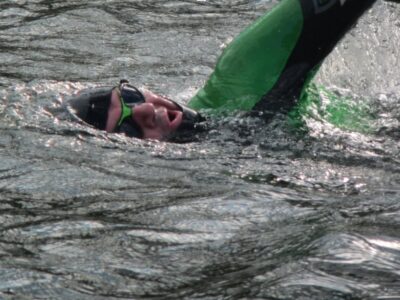
We had a smooth trip to Kolkata with our two taxis amazingly staying together through the traffic. After checking in and freshing up, we went out for dinner and found a great Bengali Restaurant filled mostly with Bangladeshis around the corner. Our hotel turned out to be next to an area where Bangladeshis frequently stay, including Humayun previously. In the morning, he and I went for an early morning walk through the park and saw the Queen Victoria Memorial. Circling back past all the cricket players, we passed Fort William, the original British fort here, and joined Doug and Diane for breakfast. Our car arrived and before heading to the Sundarbans, we drove around to get shots of the Hooghly River. Before the 1600s, this was the main course of the Ganges, but since

then it shifted to it present course into Bangladesh. We got some shots from the new bridge before being chased off. Then we headed to the Strand to get close to the river. While we were filming, a funeral procession arrived to scatter ashes of the deceased into the river. Once the Holy Ganges, always the Holy Ganges. We couldn’t have planned it better.
Then, off to the Sundarbans. Where we were going was a lot farther than implied. This is because of a difference in naming. In Bangladesh, the Sundarbans is the National Mangrove Forest. The cultivated areas that previously were forest are not considered the Sundarbans. In India, they are. Thus we entered the Sundarbans after 2.5 hrs, but still had that long to go to meet our boat.

Admittedly, some of the cultivated areas in India still maintain mangroves outside of the embankments, which is not the case in Bangladesh. Continuing on, we reached literally the end of the road and carried our luggage (including a 50 lb. bag of rock samples) down to a ferry that took us to Gosaba. There, we first got a hand rickshaw to get the luggage across the town, then got two motorized rickshaw trucks to cross to the other side of the island. Finally, we were met by a boat that took us across the river to the eco-lodge where we would stay. After a late (4 pm) lunch we went on a sunset boat ride through some tidal channels. The saw and heard lots of bird and at times the channel became so narrow that we had to push branches away to fit through. The

trees here overhang the channels more than in Bangladesh. We would see further differences tomorrow. After finally showering off, we met other people staying at the eco-lodge, started by 4 cousins including Ajoy, who is leading our trip. The lodge is solar powered, so electricity is limited,but the water was refreshingly cool, not cold. We all heard a performance of Bengali Baul music, recognizing some songs from similar experiences across the border. After dinner, we all went for some local rice wine and then a boat ride to see bioluminescent plankton in a small channel. If you wave your hand in the water dots of light flash.
In the morning, we started at 6 am to have enough time before I had to head for the airport. We picked

up food and a cook and permits and a guide and finally were ready to enter the forest. In India, no one is allowed off the boat to step on the forest, nor to stay overnight in the forest, even on a boat. Thus many hotels and lodges have sprung up outside the forest for tourists. Many come simply to party and drink. We are very glad to be using an eco-lodge that is more respectful of the land and the local population.
At 8, we finally entered the national forest. Among the differences from the Bangladesh side we noted were the shorter height of the trees in the more saline water, the lack of sediment in the water, and the extent of bank erosion. Where the eastern Sundarbans is fresher with ample sediment carried by the tides due to its proximity to the Ganges-

Brahmaputra-Meghna River mouth, the western, Indian Sundarbans is more saline and lacks new sediment. Between subsidence and sea level, it is loosing ground. More land is being lost than gained. With the higher salinity, there is also less wildlife. However, there was a tiger sighting this morning. We sailed to the spot, but it was too late, we missed it. Still, we spent 4 hours sailing through tidal channels of different size, eating, and filming. Doug captured the beauty of the Sundarbans and I was interviewed with a great backdrop.
After completing our work, we briefly visited an observation post, we took a short cut through an interior channel in Gosaba Island, dropped off our guide, and crossed the channel to our car. Three hours later, I arrived here at the airport to start my journey home. It was an intense, yet calm 48 hours in West Bengal, the third leg of three very different pieces of this trip.







